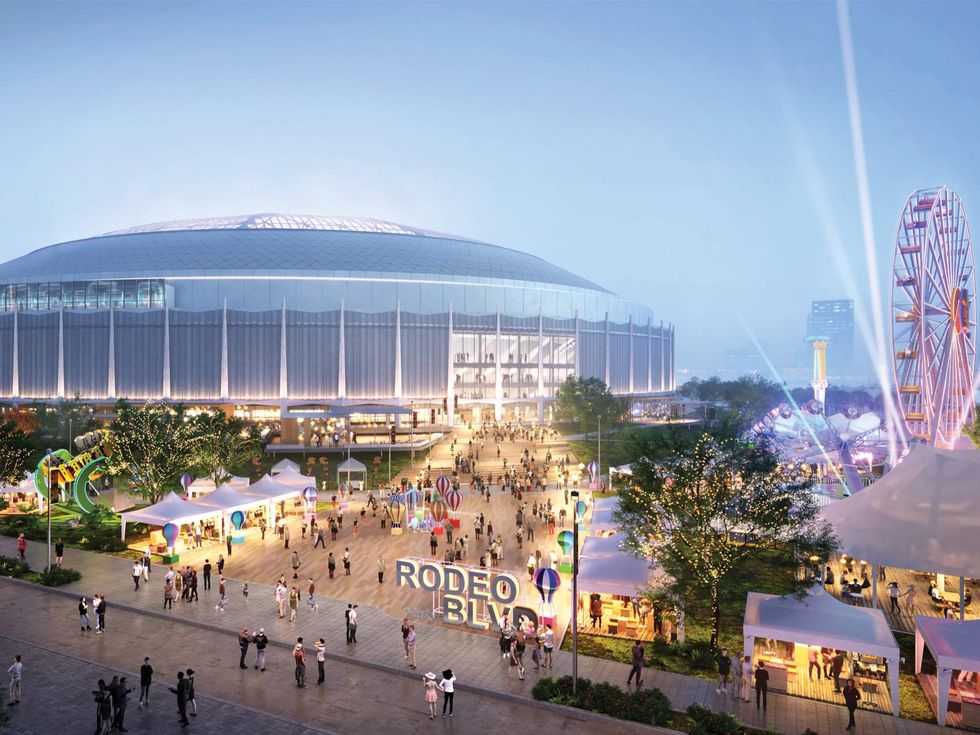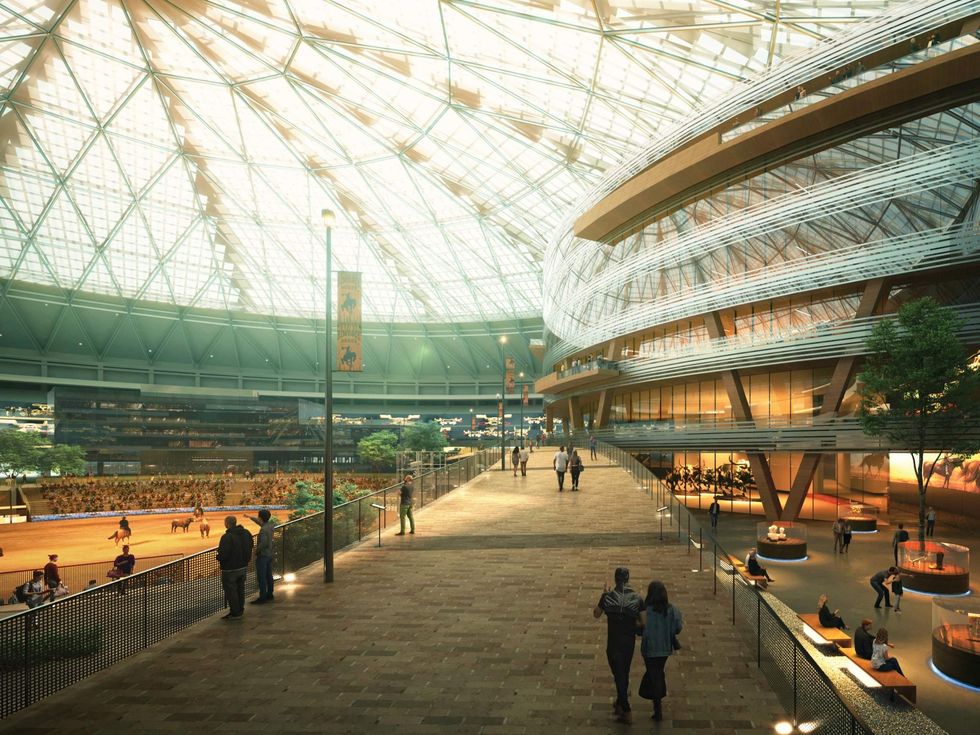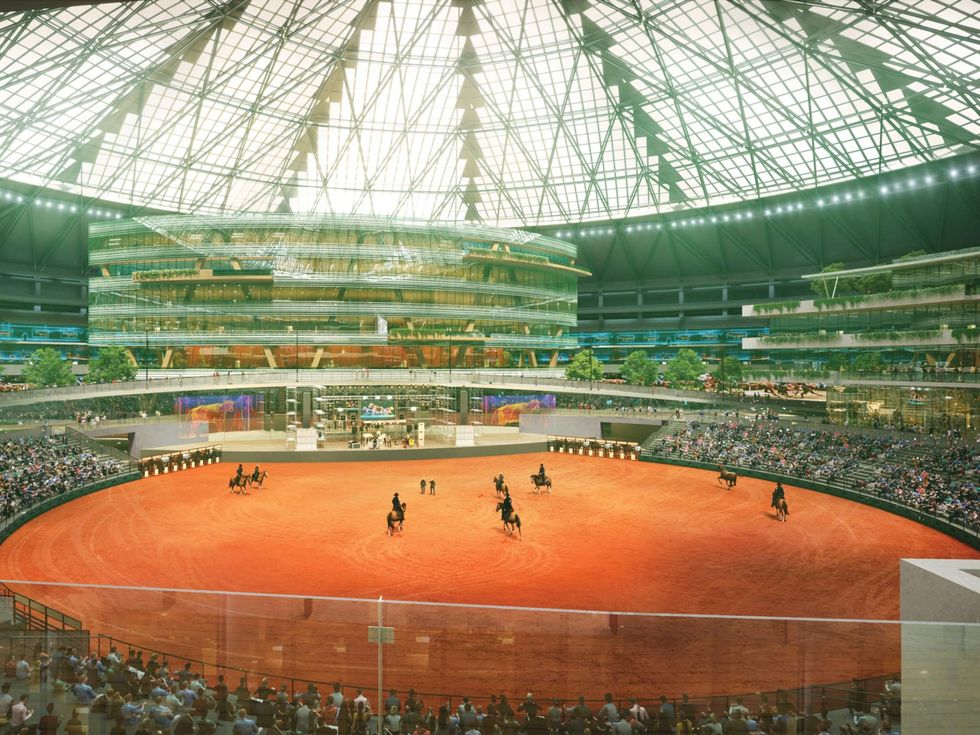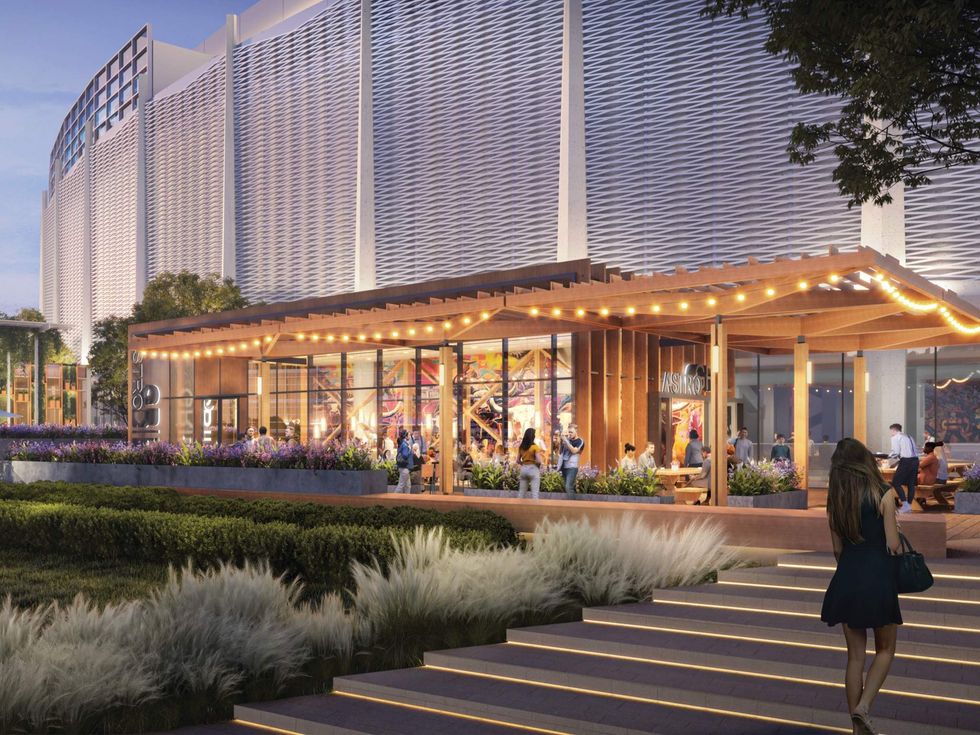Astrodome's new vision
New proposal to save the Astrodome calls for shops, restaurants, and more
The Houston Astrodome is both the city’s crown jewel and a rotting albatross depending on which direction you view it from. To address the ongoing problem of what to do with the facility, the Astrodome Conservancy has unveiled Vision: Astrodome, the latest bold plan to repurpose the dome by turning it into a small city-within-a-city with four inner buildings and walkable green spaces.
“Our 8th Wonder of the World is as Houston as it gets,” says Abbie J. Kamin, Houston City Councilmember from District C. “This historic protected landmark, filled with generations of memories and a legacy of iconic sports and music, is woven deeply into our hearts and our heritage. I am grateful that the Astrodome Conservancy has found a path forward to not only save the Dome but provide an economic asset Houstonians can enjoy year-round.”
Here's the vision. There will be a central event space on the dome floor. Four building will surround it, offering restaurants, retail shopping, and offices. The plan should result in 450,000 square feet of revenue generating space, all within the confines of the dome itself.
In addition, a connecting boulevard will move visitors throughout the area. This plan is based on New York City’s Highline, a raised walkway built on an old viaduct that opened in 2009 and has become a template for repurposed city architecture across the nation. Not only will the dome boulevard connect the various structures inside the dome, but also lead to the other buildings in NRG Park.
Built in 1965, the Astrodome is one of the most iconic sports stadiums still standing in the world. It was the first domed stadium, ushering in a new era of air-conditioned sports entertainment that earned it the nickname 8th Wonder of the World. Muhammad Ali fought in the dome, it hosted Wrestlemania, the famous “Battle of the Sexes” tennis match took place there, and it was of course the longtime home of the Houston Oilers, Houston Astros, and the Houston Livestock Show and Rodeo.
When it closed in 2008 (and failed to meet fire code the next year), no one quite knew what to do with it. Ken Hoffman, writing in 2019, called it “puny and old, an embarrassing, dingy public eyesore” next to the shiny new NRG Stadium. In 2013, the city held a referendum on spending $217 million to renovate the dome, which failed and seemed to doom the dome to the wrecking ball.
Harris County Judge Ed Emmett started a campaign to save the dome, leading to a long and protracted discussion on what was best for the city. On the one hand, the Astrodome is a fully paid-for asset of Harris County and an iconic landmark to boot. On the other hand, no one could agree on what to do or how to pay for it. The dome waited.
In 2016, the Astrodome Conservancy was formed as a private nonprofit dedicated to revitalizing the dome. To date, they have raised $3 million toward the project, which is still a drop in the bucket when it comes to remodeling the space. Two years later, Harris County Commissioners court approved $105 million to raise the floor and turn the dome back into an event space. Progress was again halted under Harris County Judge Lina Hidalgo, who questioned whether renovating the dome was a wise use of the county’s money. The county currently spends $150,000 to $400,000 to maintain the empty dome.
So, what will Vision: Astrodome cost and where will the conservancy get it? The answer to the first question is currently: don’t know. The answer to the second question is: don’t know, but . . .
Vision Astrodome is meant to be a “conversation starter” between the major stakeholders in NRG Park according to official press documents. That likely means the conservancy is hoping to leverage economic interest and city pride to raise the money from the Houston Texans and the rodeo. Both have a contract with the county that gives them priority at NRG Park until 2032 and are unlikely to approve anything that threatens the parking situation in the complex.
The rest will likely come from Harris County itself, paid for through taxes and hotel fees. Houston refused to foot the bill in 2013, but nostalgia may have turned the hearts of the populace since then, especially if Houston can get a first-class facility out of the deal. Until then, the dome sits as it has for 15 years, watching the city pass it by.




